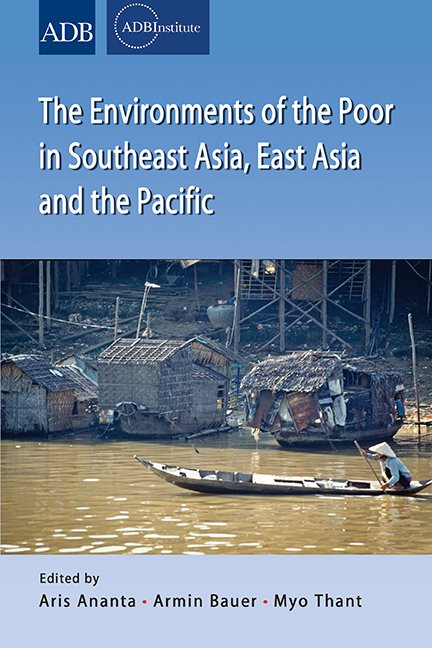Book contents
- Frontmatter
- Contents
- Preface
- List of Contributors
- Part I OVERVIEW
- Part II EAST ASIA (People's Republic of China and Republic of Korea)
- 2 Poverty, Environment, and Climate Change in the Grasslands of China
- 3 Climate Change, Food Security, and Poverty in the People's Republic of China
- 4 The Physical and Social Environment of the Chinese Urban Poor
- 5 Benefiting the Poor, the Environment, and the Private Sector with Small Enterprises and Green Jobs in the People's Republic of China
- 6 Environment, Economic Growth, and Poverty in the Republic of Korea
- Part III PACIFIC ISLANDS
- Part IV MAINLAND SOUTHEAST ASIA (Cambodia, Thailand, Vietnam)
- Part V ARCHIPELAGIC SOUTHEAST ASIA (Indonesia, Malaysia, Philippines)
2 - Poverty, Environment, and Climate Change in the Grasslands of China
from Part II - EAST ASIA (People's Republic of China and Republic of Korea)
Published online by Cambridge University Press: 21 October 2015
- Frontmatter
- Contents
- Preface
- List of Contributors
- Part I OVERVIEW
- Part II EAST ASIA (People's Republic of China and Republic of Korea)
- 2 Poverty, Environment, and Climate Change in the Grasslands of China
- 3 Climate Change, Food Security, and Poverty in the People's Republic of China
- 4 The Physical and Social Environment of the Chinese Urban Poor
- 5 Benefiting the Poor, the Environment, and the Private Sector with Small Enterprises and Green Jobs in the People's Republic of China
- 6 Environment, Economic Growth, and Poverty in the Republic of Korea
- Part III PACIFIC ISLANDS
- Part IV MAINLAND SOUTHEAST ASIA (Cambodia, Thailand, Vietnam)
- Part V ARCHIPELAGIC SOUTHEAST ASIA (Indonesia, Malaysia, Philippines)
Summary
In north and northwest China lie vast areas of grassland. Most of which are also dryland. In the past fifty years, there have been drastic changes to the ecology and environment of this area due to ongoing drought, rising temperature, and imprudent human activities, including unsustainable development. Of the 70 million people who live in the area, 7 or 8 million are nomadic or settled herders. Poverty is a serious problem for herders.
The vast grasslands of north and northwest China are in the semi- arid and arid belts of the east part of the Eurasian grassland. Drought is always a great threat to the environment and people there. In some areas (e.g., western Inner Mongolia and southern Xinjiang), the annual rainfall is below 200mm, having the largest area of arid pastures and poor vegetation in terms of height, coverage, and number of grass species.
In the past half century, there have been drastic changes to the area's ecology and environment due to persistent drought, rising temperatures, imprudent human activities. Degradation of the pastures in the north and northwest China is a common phenomenon. The grassland of north and northwest China has been in a condition of non-self-maintenance, non-sustainable in ecology and non-sustainable in environment (Wang 2010). And deterioration of the grassland eco-environment has been happening in most of the grassland areas. The following are the most serious issues:
• of the 2.87 billion hectares grassland, about 90 per cent of the pastures are deteriorated to certain degrees;
• the pastures that are deteriorated, desertified, and salinized constitute about 53 per cent in area of the total;
• the production capacity of the grassland has decreased by 17–40 per cent, of which the arid grassland pastures is the most serious, a 40 per cent reduction is very common;
• the area of soil erosion in the north and northwest China increased from 2,870,000 km 2 in 1989 to 2,940,000 km 2 in 2000, most of which occurred in the grassland areas;[…]
- Type
- Chapter
- Information
- Publisher: ISEAS–Yusof Ishak InstitutePrint publication year: 2013



